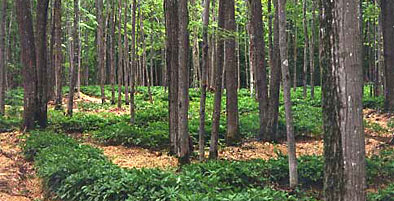Goldenseal is one of the most powerful medicinal plants in North America. It is a synergistic herb, meaning that it is often combined with other plants to boost their medicinal properties. It is used as a digestive aid and is also included in topical applications for its antimicrobial properties. It’s an anti-inflammatory and an anticatarrhal. Herbalist Ben Kitchen explains goldenseal’s medicinal properties in the first video of this series:
The price you can receive per pound of goldenseal is contingent upon the alkaloid content of the root. A higher alkaloid content will yield a higher price. However, when looking for a site to grow goldenseal, soil and drainage aren’t the only site properties to consider. The trees on the site will determine how much competition your goldenseal crop will have. Herbalist and forest farmer, Ben Kitchen, explains which trees to avoid and which trees are optimal for growing goldenseal under.
Although rhizome division is the more common method for propagating goldenseal, it is also grown through seed. This process takes longer, but can increase crop gains. Herbalist, Ben Kitchen illustrates the planting process.
Rhizome propagation is a faster way to propagate goldenseal, but success is generally hinged upon healthy root fibers being present on the rhizome. A growth bud’s presence is an added benefit. Herbalist, Ben Kitchen, illustrates rhizome and fiber propagation and explains the general time frame for growth associated with each.
Ben Kitchen explains the life cycle of goldenseal. From seeding to mature plant, he explains the timeline of the plant’s development.
After harvesting several pounds of goldenseal, it isn’t always possible to propagate it immediately. Fortunately, goldenseal can be stored for several months until rhizome division can take place. Ben Kitchen illustrates how to store or ‘heal over’ goldenseal by layering it with sphagnum peat moss to prevent bacteria from destroying the roots.
